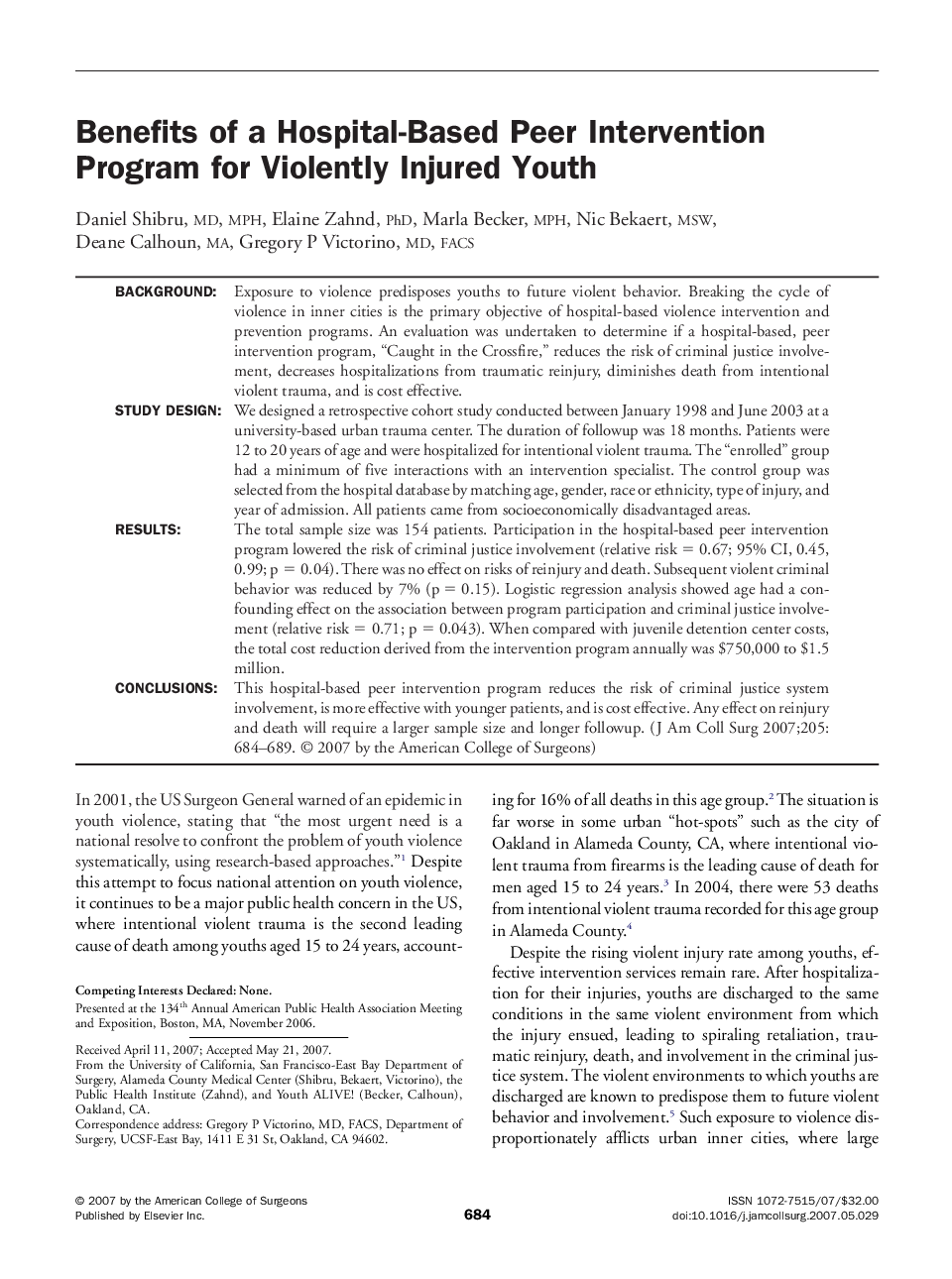| Article ID | Journal | Published Year | Pages | File Type |
|---|---|---|---|---|
| 4294752 | Journal of the American College of Surgeons | 2007 | 6 Pages |
BackgroundExposure to violence predisposes youths to future violent behavior. Breaking the cycle of violence in inner cities is the primary objective of hospital-based violence intervention and prevention programs. An evaluation was undertaken to determine if a hospital-based, peer intervention program, “Caught in the Crossfire,” reduces the risk of criminal justice involvement, decreases hospitalizations from traumatic reinjury, diminishes death from intentional violent trauma, and is cost effective.Study DesignWe designed a retrospective cohort study conducted between January 1998 and June 2003 at a university-based urban trauma center. The duration of followup was 18 months. Patients were 12 to 20 years of age and were hospitalized for intentional violent trauma. The “enrolled” group had a minimum of five interactions with an intervention specialist. The control group was selected from the hospital database by matching age, gender, race or ethnicity, type of injury, and year of admission. All patients came from socioeconomically disadvantaged areas.ResultsThe total sample size was 154 patients. Participation in the hospital-based peer intervention program lowered the risk of criminal justice involvement (relative risk = 0.67; 95% CI, 0.45, 0.99; p = 0.04). There was no effect on risks of reinjury and death. Subsequent violent criminal behavior was reduced by 7% (p = 0.15). Logistic regression analysis showed age had a confounding effect on the association between program participation and criminal justice involvement (relative risk = 0.71; p = 0.043). When compared with juvenile detention center costs, the total cost reduction derived from the intervention program annually was $750,000 to $1.5 million.ConclusionsThis hospital-based peer intervention program reduces the risk of criminal justice system involvement, is more effective with younger patients, and is cost effective. Any effect on reinjury and death will require a larger sample size and longer followup.
